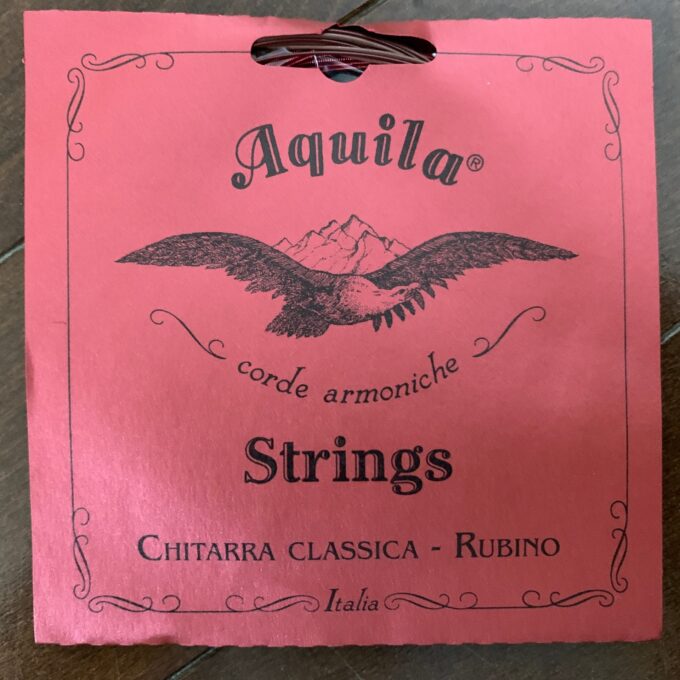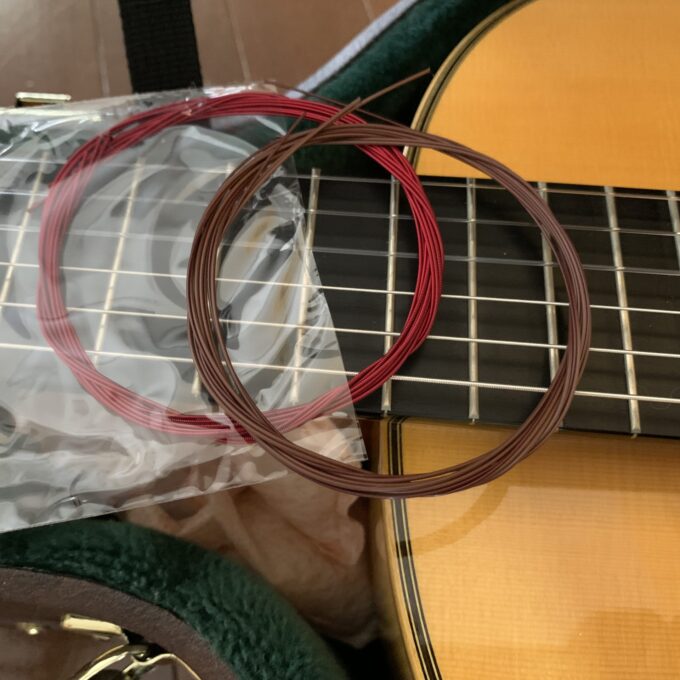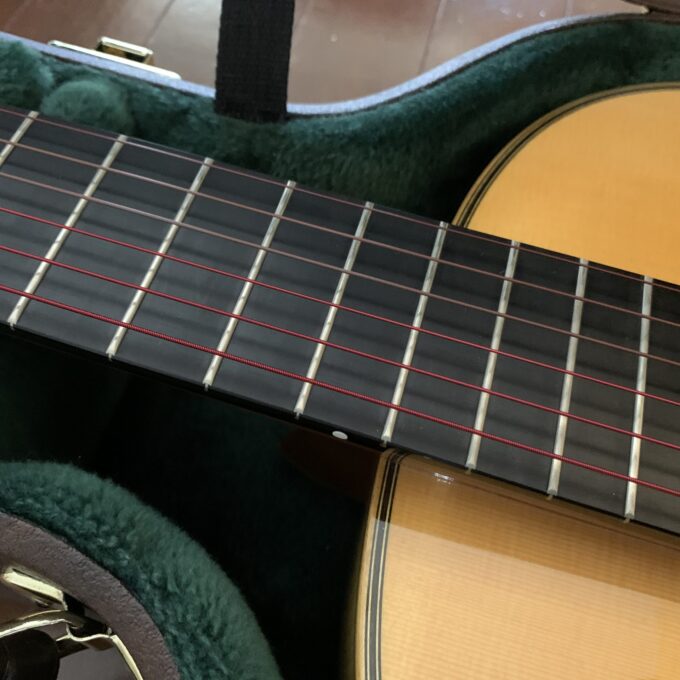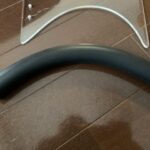I tried again the strings of Aquila, which has a reputation for making unique strings. They are called “Rubino” and they are indeed ruby red.

The following article is a summary of the string reviews/feedback/information articles on this blog:
- Polymer strings mixed with metal powder?
- Red-brown treble strings and red bass strings
- Loud but not squeaky treble strings
- Bass strings that are more modest than they look
- Strings that are more normal than you think
- (Postscript) The sound stabilizes quickly
- (postscript) It sounded thick and loud, but its life was not very long.
Polymer strings mixed with metal powder?

This Rubino uses a polymer mixed with metal powder for the treble strings.
The concept is that if you want to make the strings sound better at low frequencies, you have to make them thicker, and if you do that, you end up with a hazy sound, so they used a new material to solve that problem.

There is a lot of information on the back of the package like this, but it is so detailed and hard to read on the red background.
I’ve tried many treble strings made of new materials, and all of them are unique. I’m sure this one has a unique sound, too.
Red-brown treble strings and red bass strings
Let’s open the package.

The reddish brown one in the picture above is treble string, and the red one is bass string. I can’t believe it’s a classical guitar.
The treble strings are a little more brownish than red beans. The color of the treble strings is a little more brown than red beans, and is far from the “ruby” that Rubino means.
The closest thing to touch is the Pro Arte Composite 3rd string. It feels harder to bend than nylon. The fibers are thicker than nylon, so you feel a little resistance when you rub it.
The bass strings are probably the same as the Aquila Sugar strings I tried before. Usually bass strings are plated with silver winding, but this one is coated with resin to prevent rust. It’s metallic red, so it’s not like ruby. By the way, this bass string seems to be changed the specification, it used to be silver plated. Aquila often change the specification in the same product name, so it is complicated.

This is what it looks like when all the strings are strung. I wonder what kind of instrument this is…
Loud but not squeaky treble strings
Here are my thoughts on playing it.
First of all, as for the treble strings, despite their strange appearance, I felt surprisingly little discomfort. Speaking of treble strings that sound loud, it is the carbon strings. But compared to carbon, they don’t sound harsh, rather they sound loud with thick sound.
And yet, it is also excellent at changing the tone color to produce a sharp sound if you want to. There are few extra overtones, so when you play a chord, you can hear the sound of each string well.
One thing that bothers me a little is the surface resistance. Depending on the condition of your fingertips, you might get a squeaky noise. I’d like to write about this again because it might change when I play it.
The resistance on the surface makes it easier to do slurs.
Is it a common feature of this polymer string that it stabilizes quickly?
Bass strings that are more modest than they look
The bass string looks sounding like an electric guitar or acoustic guitar from the outside, but this one was very modest
The 6th string has a bass sound from the bottom, and the 5th and 4th strings have a more metallic sound. It has a good separation of sound and goes well with Rubino’s treble strings.
The tension seems to be high, but it is rather low and easy to play.
Strings that are more normal than you think
I couldn’t get my hands on it because the appearance and the name seem like a crazy string, but when I tried it, I found it was a surprisingly normal string to use.
At least not as much as the company’s Sugars.
I’ve only just put it up so I’ll see what happens when it settles down.
(Postscript) The sound stabilizes quickly
It was the most quick-stabilized strings I’ve ever used.
The next day after I strung it, it was stable, including the treble strings.
It also seemed to be a very practical string, as it stabilized quickly when I dropped the 6th string on D and back.
(postscript) It sounded thick and loud, but its life was not very long.
The treble strings sound loud. It is a rare string that sounds loud but also thick. So, if you don’t like carbon strings, but you are worried about the muffled sound of nylon, this might be a good choice.
The bass strings are also thick and loud. It’s good for playing melodies across the 4th and 3rd strings because of the consistency of the sound between the treble and bass strings.
However, I think the life span is a bit short. The bass strings in particular were quickly scraped off where they hit the frets, which made them sound fuzzy. It’s a shame that they don’t sell the bass strings alone.



